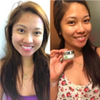Estimated to affect 60 million people in the US alone, acne is one of the most common skin problems in the world. It can range from mild and occasional acne to more serious conditions that involve cysts and deep scarring.

<a href="https://keevaorganics.com/blogs/the-keeva-buzz/15-natural-remedies-to-get-rid-of-acne" target="_blank" rel="noopener"><img class="aligncenter" src="https://cdn.shopify.com/s/files/1/1096/2552/files/15_Natural_remedies_to_get_rid_of_acne.jpg?v=1532339242" alt="15 Natural Remedies to Get Rid of Acne [Infographic] | Keeva Organics" /></a>
Acne is so common, 85% of people surveyed experienced it in one form or another according to a 2016 study.
While there are currently a lot of treatments available for it on the market, most are either expensive or their effects are not consistent. Some people will have a positive reaction to acne treatment while others may not have any noticeable effects at all. Worse, some people will react to the treatment adversely.
Also, some forms of acne have underlying causes aside from external factors. For instance, studies reveal that the presence of certain compounds, bacteria, and fungi in the gut can influence breakouts.
An alternative method for treating acne is going all-natural and drug-free. The idea of such a treatment is to address acne on its roots rather than simply trying to cure it with drugs. By addressing the root of the problem, we hope to prevent breakouts without side effects.
Here are 15 of the natural remedies you can use for your acne. You can find most of them at home.
#1 Eat foods rich in zinc
One factor commonly found in people with acne, as revealed by studies, is the reduced amounts of zinc. In order to treat acne properly, the body requires a certain amount of zinc. Zinc plays a vital role in cell growth, hormone production, immune function, and metabolism. You can get zinc from foods such as oyster, baked beans, nuts (e.g. almonds and cashews) and chickpeas.
#2 Use tea tree oil
Forget about synthetic antimicrobial drugs in your favourite acne cream. Tea tree oil is just as good at killing not only bacteria but fungi, as well. It is plant-derived thus you can expect a whole bunch of good stuff such as antioxidants. It also acts as a moisturizer so you get a whole lot for just an oil.
You can apply tea tree oil to acne after cleaning it up. You can also use tea tree oil to get rid of acne scars.
Tea tree oil is one of the best at home and widely used remedies. Keeva Organics offers a great, reliable product which currently offers a great range of tea tree oil products.
#3 Apply green tea
There’s more to your green tea than just a drink—you can apply it to the skin to combat your acne. Green tea has two powerful ingredients that are particularly good at combating and treating acne: flavonoids and tannins.
The combination of these compounds gives green tea antibacterial and anti-inflammatory properties.
In addition, green tea is also rich in epigallocatechin-3-gallate (EGCG), a powerful antioxidant that is shown in various studies to reduce the production of sebum, inhibit the growth of P. acnes (the bacteria responsible for acne) and fight inflammation, as well.
You can prepare natural lotions and creams and use green tea extracts as one of the ingredients or you can create your own mixture along with other natural remedies mentioned in this article.
#4 Use witch hazel
SImilar to green tea, the extracts of the leaves and bark of North American witch hazel is also a rich source of tannins. This compound has been proven to stave off inflammation and kill bacteria.
You can apply a mixture of witch hazel extract and water to your face to dry off acne and prevent acne from reforming.
#5 Apply aloe vera to skin
Even before studies backed up the beneficial effects of Aloe Vera on the skin, people have been using it to cure a lot of conditions such as burns, baldness, irritation, and acne.
Two of the active ingredients found in Aloe Vera, that is also found in some acne treatments, are sulfur and salicylic acid. Sulfur inhibits bacterial and fungal growth while salicylic acid seems to dissolve and remove dead skin cell and dirt that clog pores up. Aloe Vera has anti-inflammatory properties that help heal and dry acne up.
#6 Eat foods rich in omega-3
Either supplement or eat foods rich in omega-3 fatty acids. Either way, by increasing your intake of these healthy fats. There are two types of omega-3 fatty acids: docosahexaenoic acid (DHA) and eicosapentaenoic acid (EPA). Of the two, EPA seems to benefit the skin the most, especially in treating acne.
First, it promotes and maintains adequate hydration, and second, it manages sebum production. These effects alone can have a dramatic impact on acne. In addition, high levels of these two fatty acids are shown in various studies to reduce inflammatory factors in the body. This does not only make acne heal faster, it also prevents acne from getting worse.
Foods that are rich in omega-3 fatty acids include chia seeds, ground flaxseeds, sardines, and salmon.
#7 Exfoliate
By exfoliating, you remove the dead skin cells that form the top layer of the skin. Dead skin cells and dirt clog the pores up and start the process of acne formation.
There are many ways to exfoliate the skin. The most common is by mechanical means. You can use a washcloth to clean your face along with your natural cleanser or you can use things like salt and sugar.
For instance, you apply sugar on the face along with your favourite cleanser. The sugar crystals will help remove dead skin cells on contact. After a few rubs, sugar tends to dissolve especially in the presence of another liquid (like water). Leave it on in the face to let it kill microbes and wash it afterwards. You can do the same with salt. Make sure that the sugar and salt powders that you are using are coarse enough to remove dirt and dead skin cells but fine enough not to irritate the skin.
Exfoliation should be done at some consistent interval (like every other day or once every three days. While exfoliation is proven to help treat acne, overdoing it irritates the skin and produce the opposite effect.
#8 Go easy on simple carbs
Simple carbohydrates, like table sugar, are easily absorbed by the body into the bloodstream causing an immediate surge in insulin levels. Studies reveal that high levels of insulin in the blood can cause a lot of skin problems including acne.
Instead of simple carbs, go for complex carbohydrates. These are carbohydrates, in the form of vegetable or fruit, that has other nutrients in it like fibre, vitamins, and minerals. The presence of these nutrients ensures that the carbohydrates in the food get absorbed more slowly thereby producing a steady stream of energy without causing an undue increase in insulin levels.
#9 Less your consumption of dairy
The hormones in dairy products, such as milk, can mess up with your own hormonal balance which can lead to acne. Furthermore, milk consumption has been proven by a number of studies to cause acne.
#10 Manage stress
It is impossible to avoid stress considering the type of society we have now. However, there are a few things that you can do increase your tolerance to it. The ideal stress response should be immediate in the presence of stimuli but gradually wears off after the stimuli are removed.
Basic things that you need to do to manage stress is to get complete and restorative sleep every night, eat a balanced diet, exercise regularly, take a day off, give time to yourself, have some type of hobby and develop a positive response and mindset for every negative situation.
#11 Use a honey and cinnamon face mask
Honey and cinnamon are packed with antioxidants and have anti-inflammatory and anti-bacterial properties. Studies show that antioxidants are far better in reducing acne than retinoid and benzoyl peroxide—two compounds that are commonly used to treat acne.
Form a paste by blending 2 parts honey and one part cinnamon. Apply it as a face mask after cleaning your face. Leave it on for 15 minutes or so before rinsing it.
#12 Exfoliate with apple cider vinegar
Apple cider vinegar contains a lot of organic acids that have anti-inflammatory and antimicrobial effects. In addition, apple cider vinegar helps exfoliate the skin and clean the pores of clogs.
#13 Treat acne scars with egg whites
The proteins in egg whites help speed up the healing process of acne. After cleaning your face, apply egg whites using a cotton ball. Leave it overnight. Do this until the acne scars are fully healed.
#14 Lighten scars with lime juice
Lime juice contains alpha hydroxy acid that helps exfoliate and renew skin. It also lightens up acne scars and makes them less visible. In addition, it helps restore the elasticity of the skin restoring that vibrant skin you have before acne.
#15 Massage your face with olive oil
An alternative to tea tree oil would be olive oil. Lightly massage olive oil in your face before you sleep and you will notice a gradual improvement in your acne scars. In addition, olive oil makes a perfect moisturizer, as well.
Conclusion
There are a lot of natural remedies for acne compared to the limited prescription medicine that we have now. Not only are these medications expensive, they also carry some risks. Their harsh properties, for instance, can adversely affect the quality of the skin one way or another. They can also have toxic properties making them not applicable to some conditions—like pregnancy.
Natural remedies are as effective than those medications. Sometimes, natural remedies are even proven more effective. They are cheap, easy to come by and have little or no side effects at all.








 Verified Purchase
Verified Purchase



